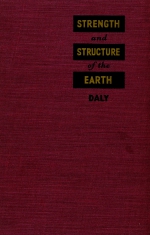Добрый день, Коллеги. Важное сообщение, просьба принять участие. Музей Ферсмана ищет помощь для реставрационных работ в помещении. Подробности по ссылке
Strength and structure of the Earth
Structural geology records colossal work done by natural forces on the visible and invisible rocks of every continent. The energy expended in this work has been chiefly of two kinds—solar and terrestrial. Geologists of the nineteenth century paid particular attention to the part played by solar radiation in governing the dynamical history of the outer earth. A leading project of the twentieth century is to learn how the conditions of the planet's deep interior have also controlled the same history.
Already some of the necessary data have been secured. The earth contains a spheroidal core, which, with a radius of nearly 3,500 kilometers and an average density of about 11, is regarded as essentially metallic iron. A number of seismologists suspect this iron to be fluid and devoid of strength. The rest of the planet, beneath ocean and atmosphere, reacts like a solid to the stresses set up by the passage of earthquake waves, and may be distinguished as a whole by the name "mantle." According to leading geo-physicists, the mantle has a mean density approaching 4.5, a thickness of about 2,900 kilometers, and a composition dominated by silicate material. At least the upper part of.
A recent summary is given in "Internal Constitution of the Earth," a volume written by a number of specialists, including its editor, B. Gutenberg.




